Abstract
Eight groups of pigeons were trained to discriminate between two stimulus displays that could be differentiated only by a single distinctive feature on one of the displays. For half of the pigeons, responses to displays containing the distinctive feature were reinforced (feature-positive), and for the remaining pigeons responses to displays without the distinctive feature were reinforced (feature-negative). The pigeons were further grouped so that half were presented displays in which the distinctive feature was in close proximity to other features (compact displays) and half were presented displays in which the features were not close together (distributed displays). Pigeons in the feature-positive groups localized responses on the distinctive feature of the displays and seldom responded to displays without the distinctive feature. Pigeons in the distributed feature-negative groups localized responses on features common to the two displays and did not learn the discrimination. Compacting the displays facilitated discrimination performance for the subjects in the feature-negative condition. Tests carried out in extinction indicated that responding in the compact feature-negative group was largely controlled by pattern rather than by the individual elements on the display.
Full text
PDF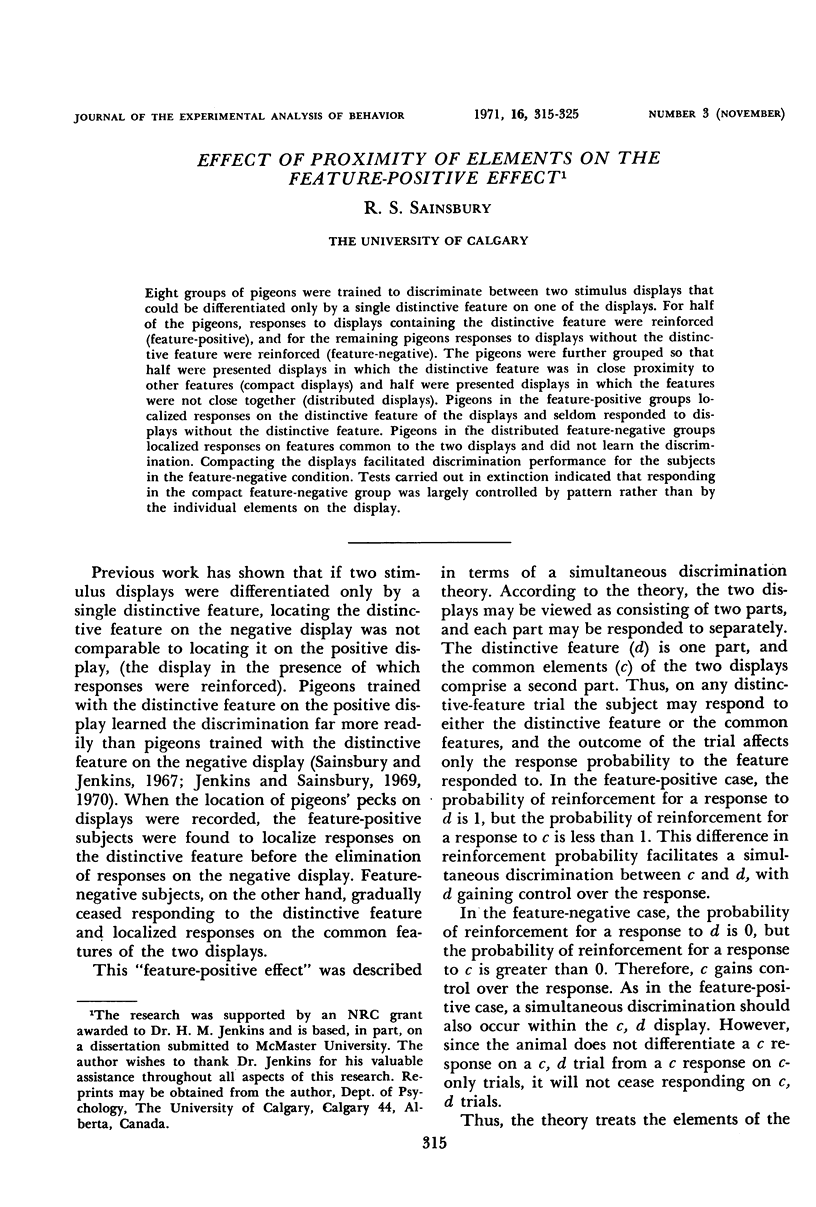
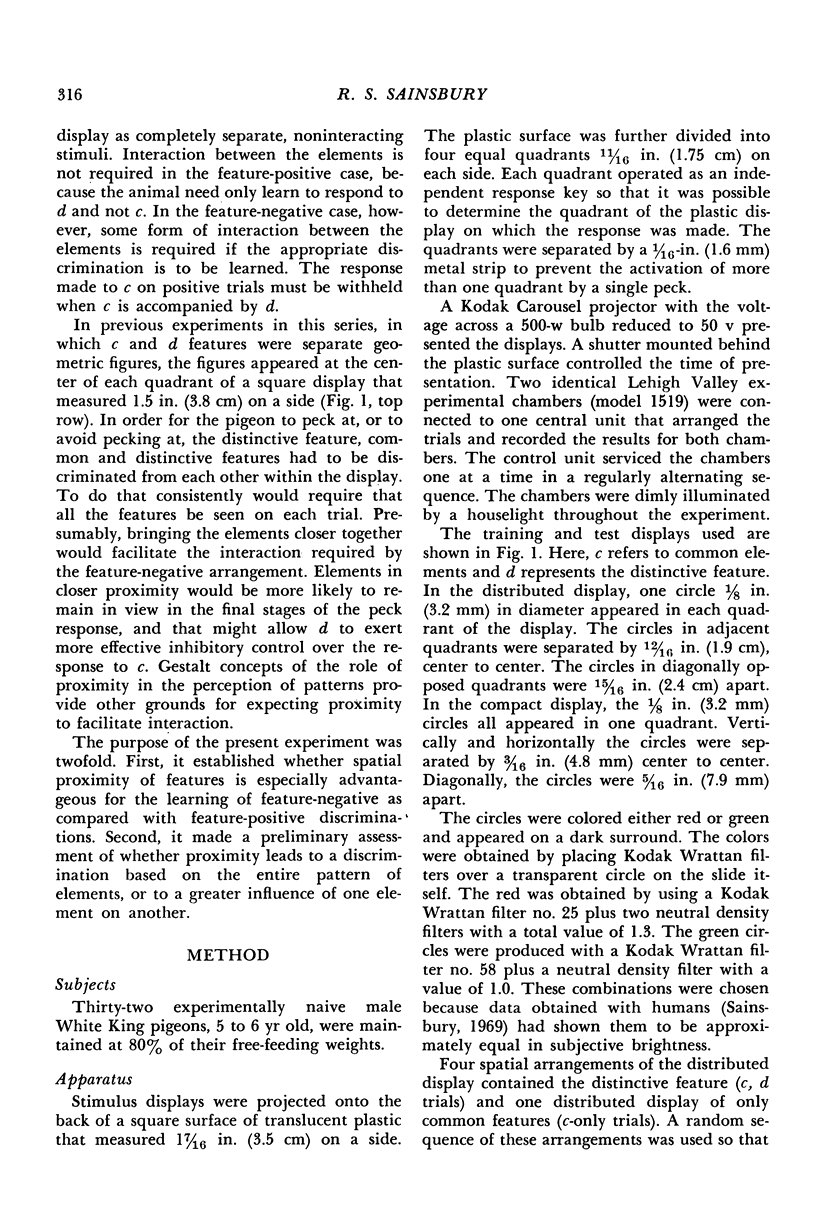
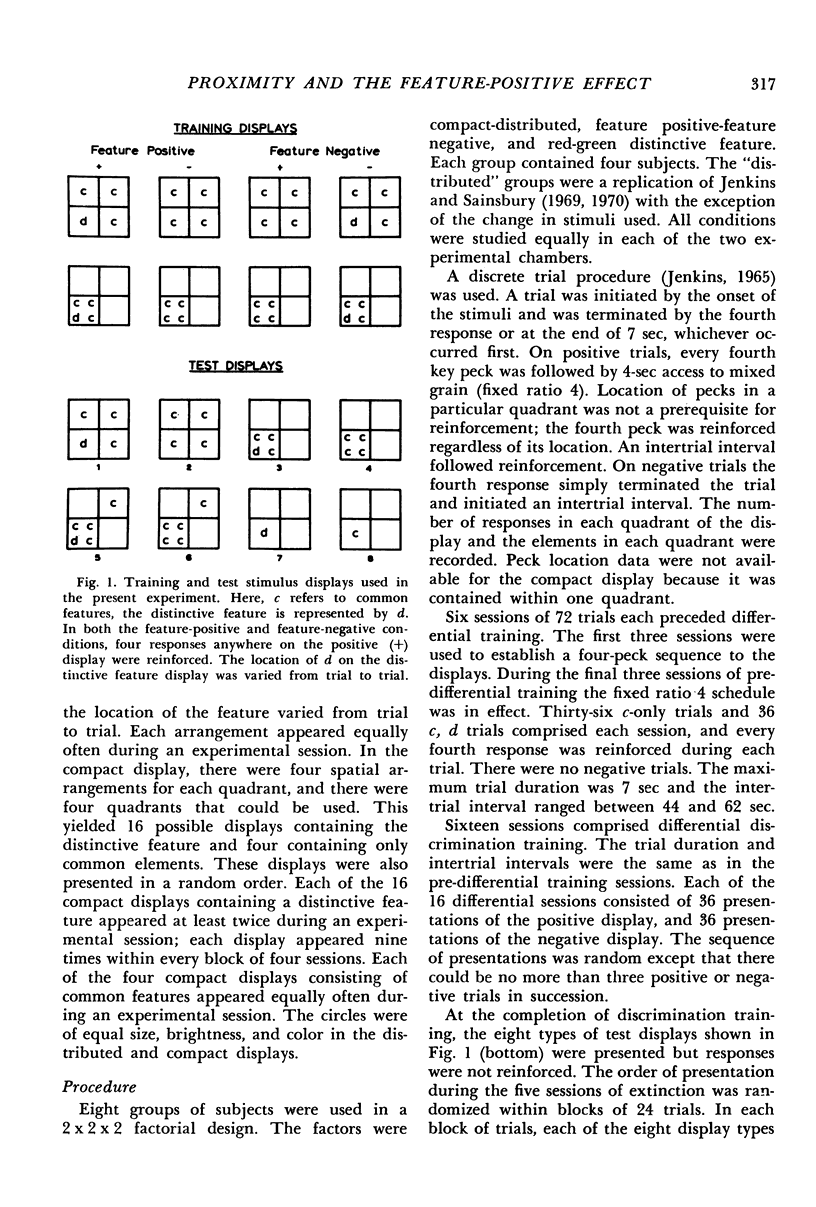
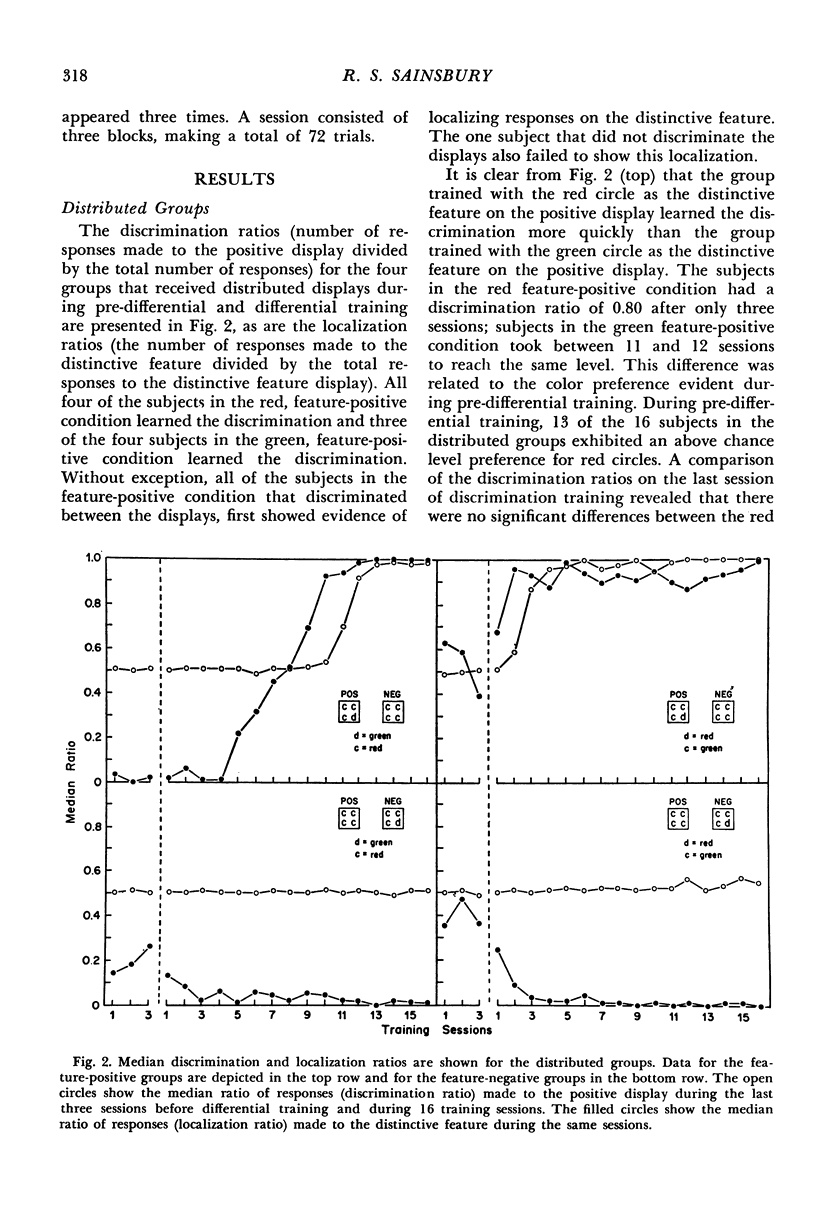
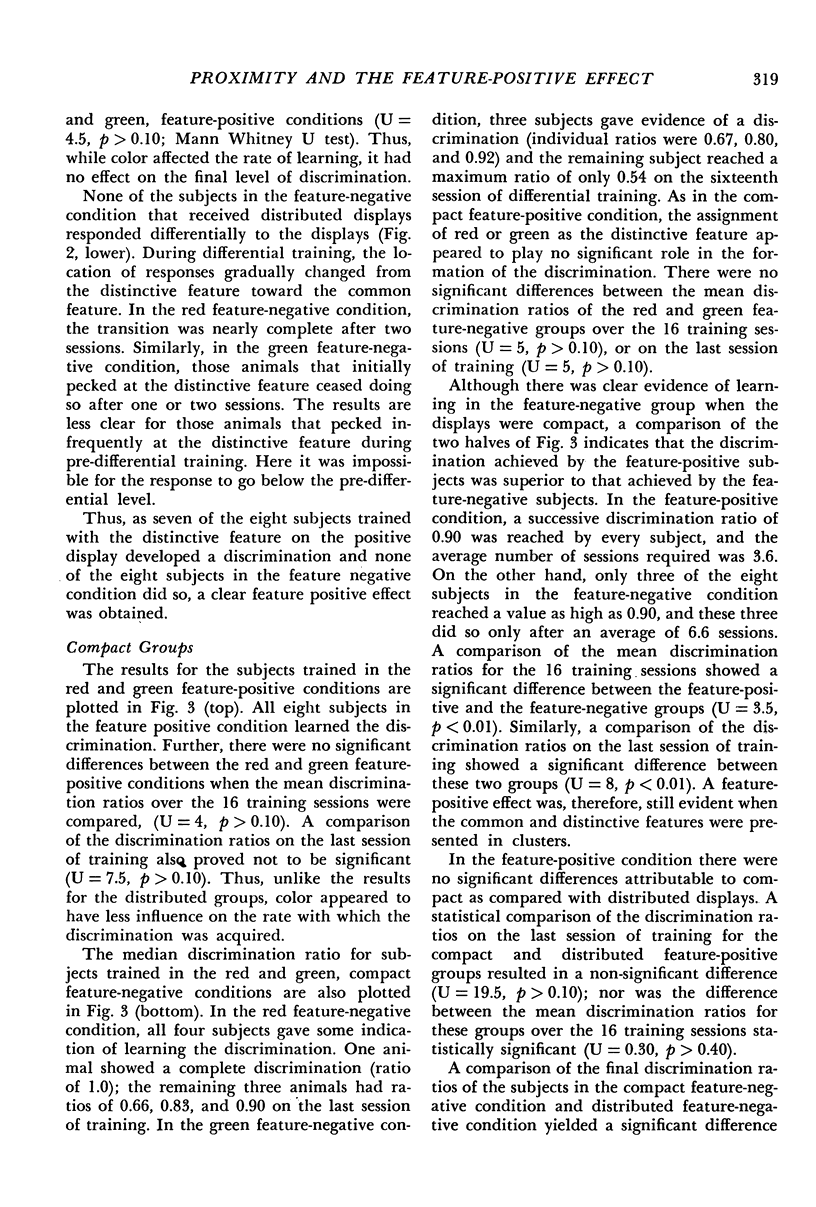
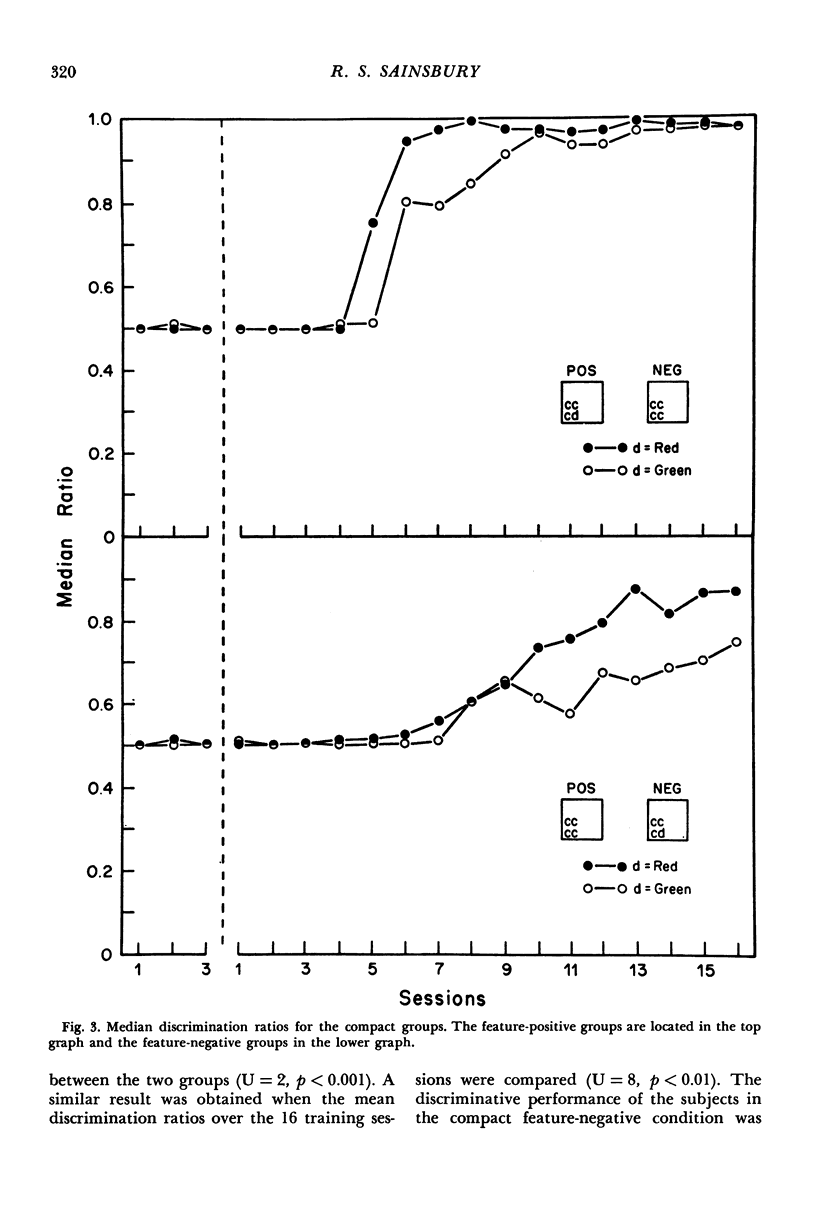
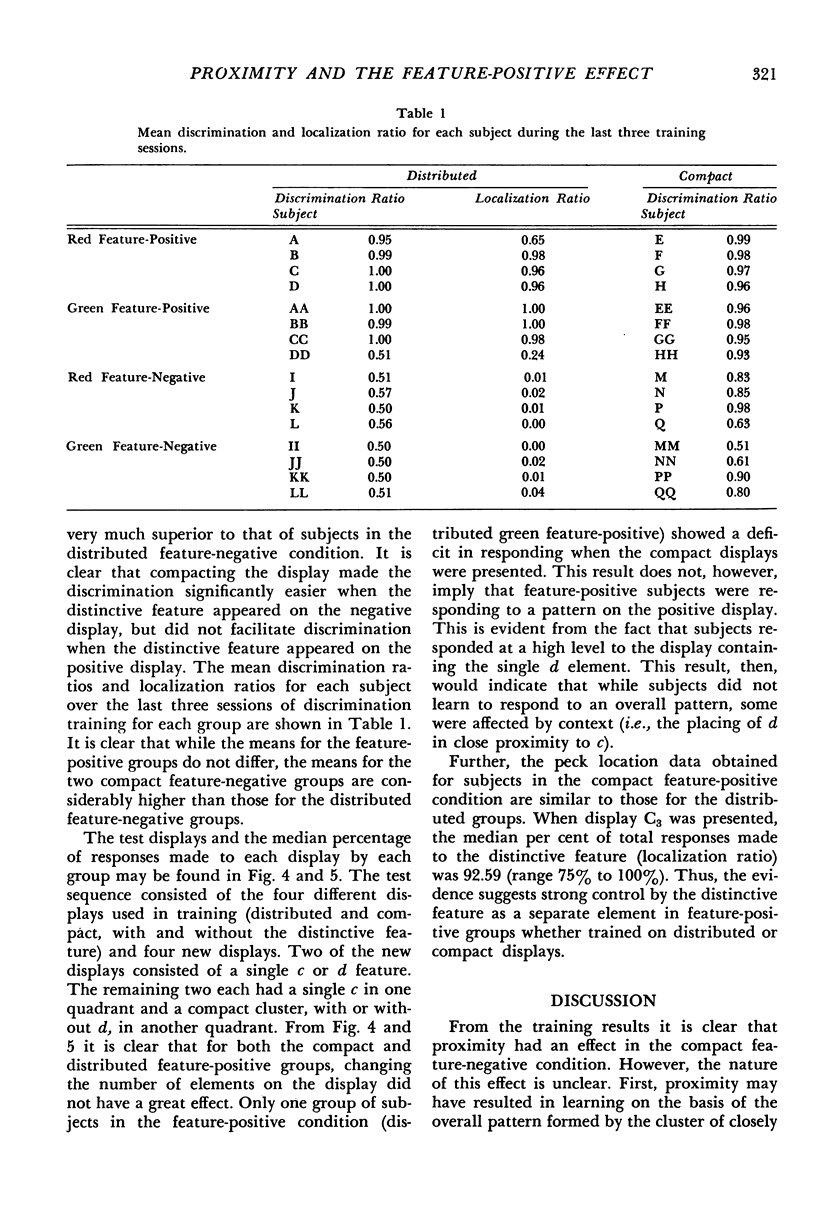
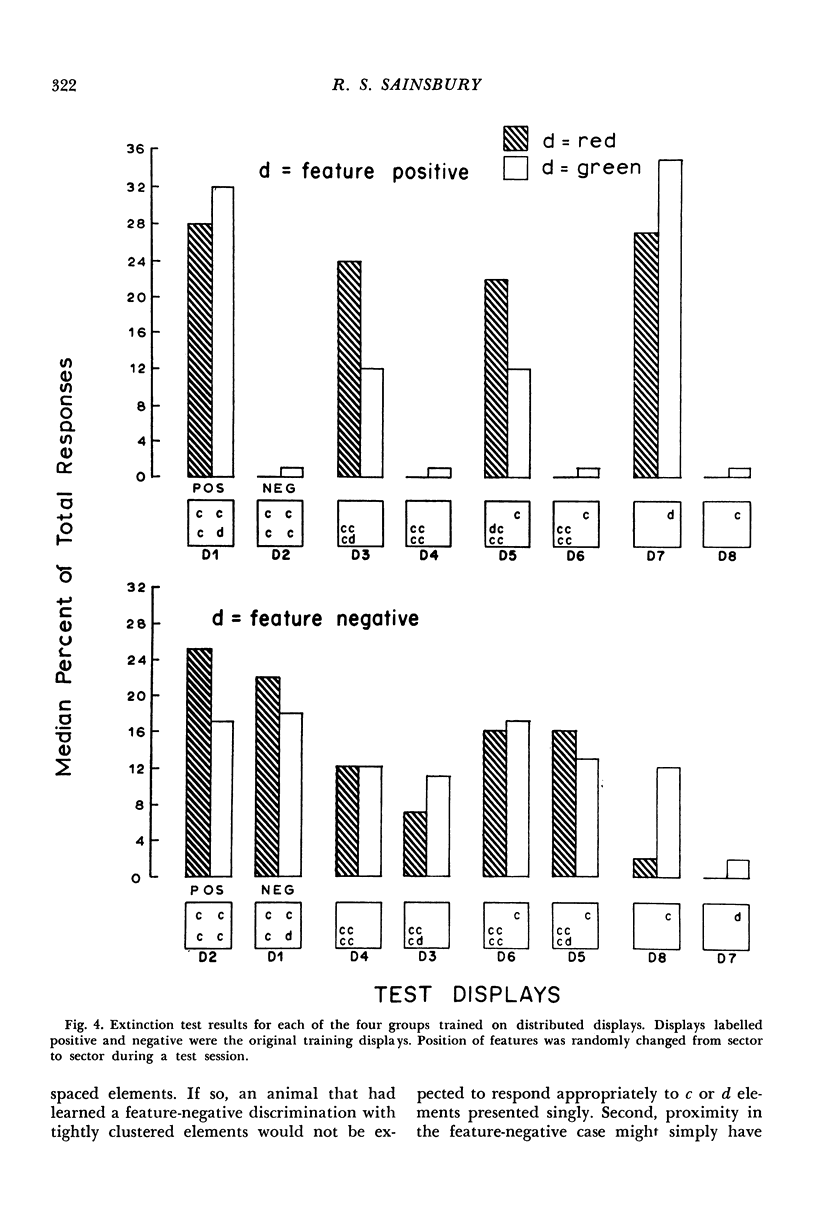
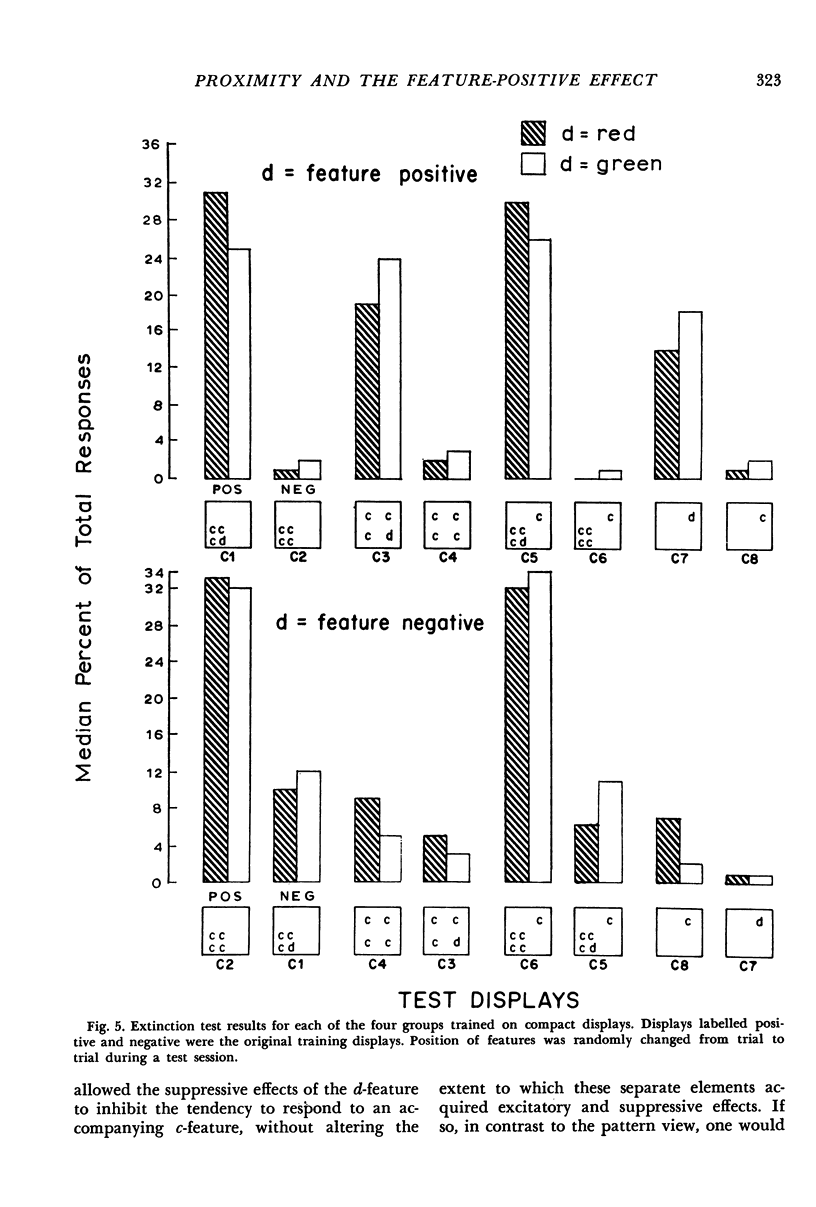
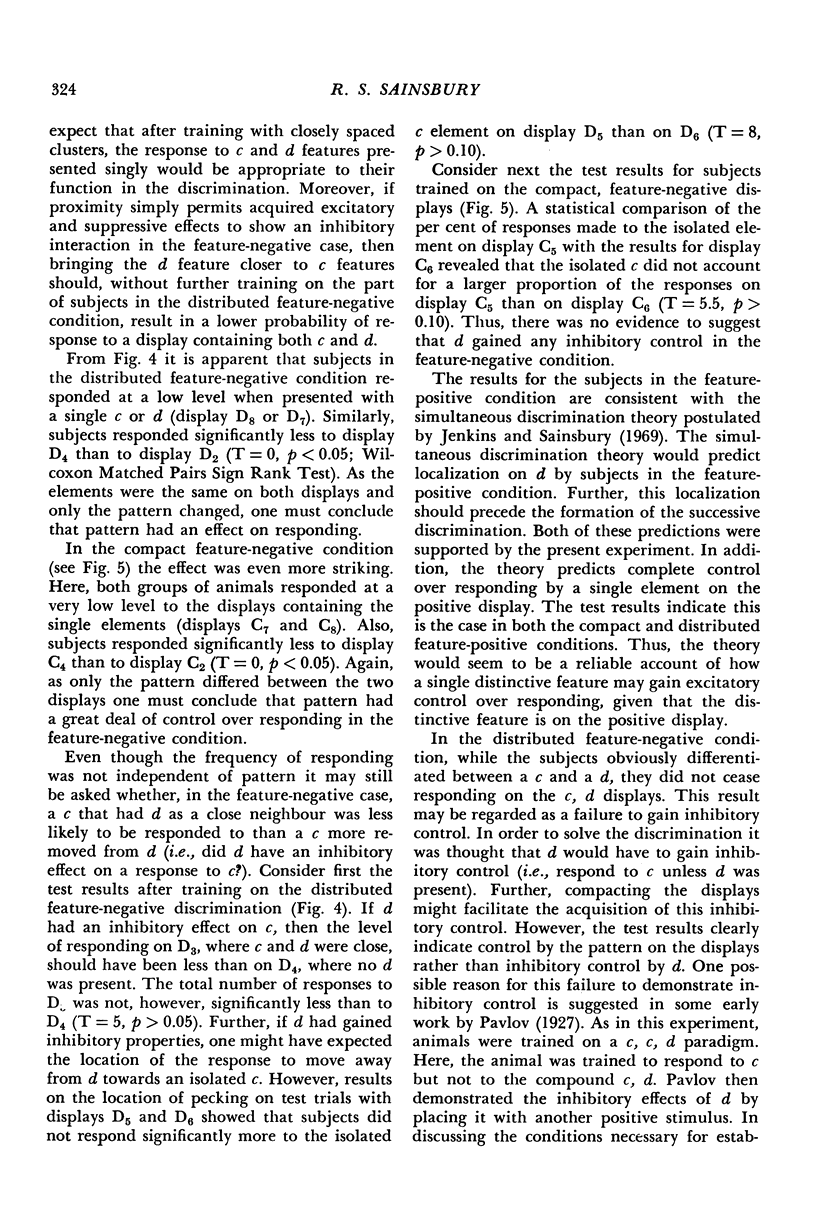
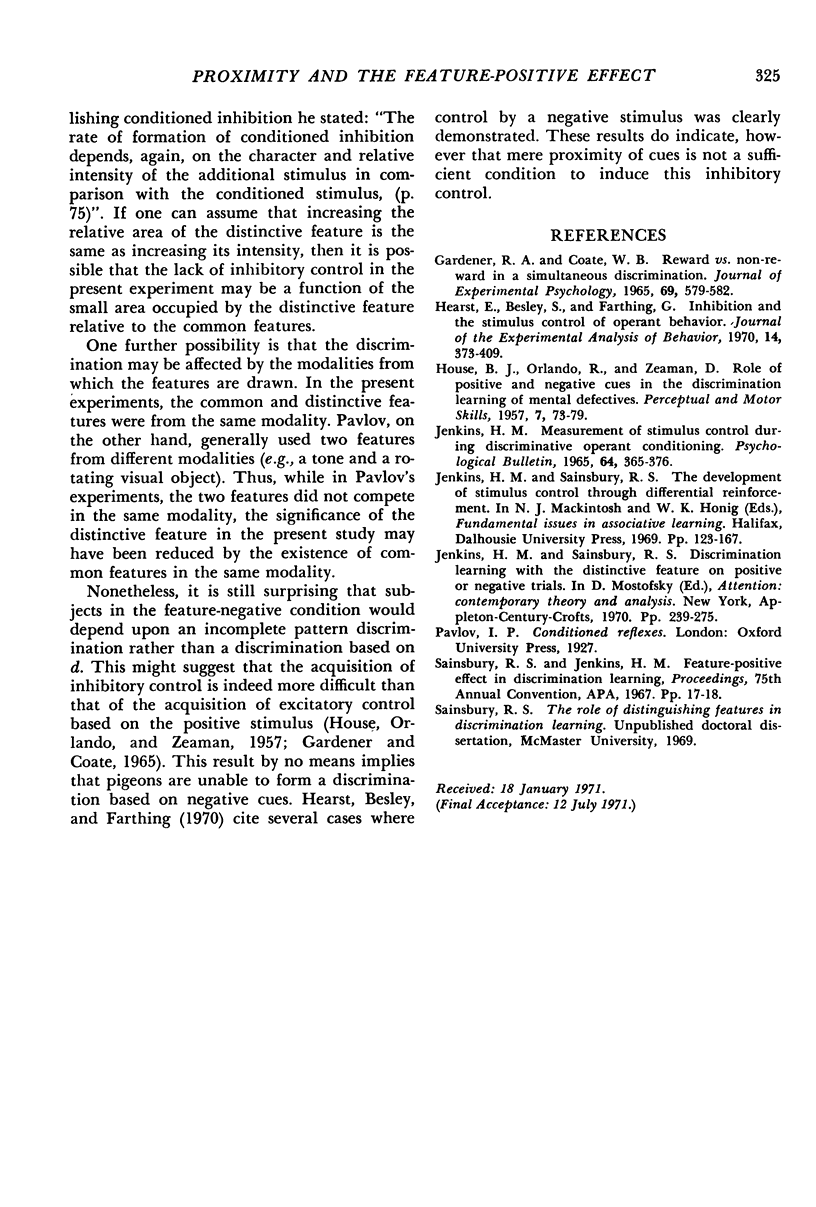
Selected References
These references are in PubMed. This may not be the complete list of references from this article.
- GARDNER R. A., COATE W. B. REWARD VERSUS NONREWARD IN A SIMULTANEOUS DISCRIMINATION. J Exp Psychol. 1965 Jun;69:579–582. doi: 10.1037/h0022057. [DOI] [PubMed] [Google Scholar]
- Hearst E., Besley S., Farthing G. W. Inhibition and the stimulus control of operant behavior. J Exp Anal Behav. 1970 Nov;14(3 Pt 2 Suppl):373–409. doi: 10.1901/jeab.1970.14-s373. [DOI] [PMC free article] [PubMed] [Google Scholar]
- Jenkins H. M. Measurement of stimulus control during discriminative operant conditioning. Psychol Bull. 1965 Nov;64(5):365–376. doi: 10.1037/h0022537. [DOI] [PubMed] [Google Scholar]


